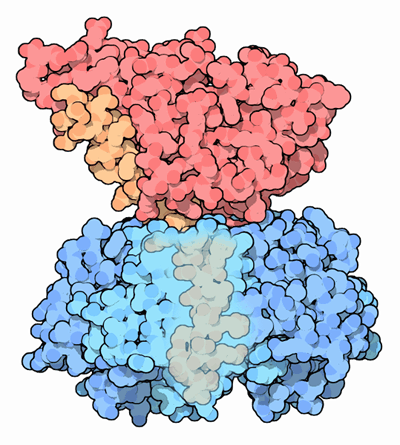Cholera pathophysiology

|
Cholera Microchapters |
|
Diagnosis |
|---|
|
Treatment |
|
Case Studies |
|
Cholera pathophysiology On the Web |
|
American Roentgen Ray Society Images of Cholera pathophysiology |
|
Risk calculators and risk factors for Cholera pathophysiology |
Editor-In-Chief: C. Michael Gibson, M.S., M.D. [2]
Overview
Choleria is a severe bacterial gastrointestinal, diarrheal disease. In its most severe forms, cholera is one of the most rapidly fatal illnesses known. A healthy person may become hypotensive within an hour of the onset of symptoms and may die within 2-3 hours if no treatment is provided. More commonly, the disease progresses from the first liquid stool to shock in 4-12 hours, with death following in 18 hours to several days without rehydration treatment.[1][2]
Pathophysiology
Most of the V. cholerae bacteria in the contaminated water that a potential host drinks do not survive the very acidic conditions of the human stomach[3] But the few bacteria that manage to survive the stomach's acidity conserve their energy and stored nutrients during the perilous passage through the stomach by shutting down much protein production. When the surviving bacteria manage to exit the stomach and reach the favorable conditions of the small intestine, they need to propel themselves through the thick mucus that lines the small intestine to get to the intestinal wall where they can thrive. So they start up production of the hollow cylindrical protein flagellin to make flagella, the curly whip-like tails that they rotate to propel themselves through the pasty mucus that lines the small intestine.
Once the cholera bacteria reach the intestinal wall, they do not need the flagella propellers to move themselves any more, so they stop producing the protein flagellin, thus again conserving energy and nutrients by changing the mix of proteins that they manufacture, responding to the changed chemical surroundings. And on reaching the intestinal wall, they start producing the toxic proteins that give the infected person a watery diarrhea which carries the multiplying and thriving new generations of V. cholerae bacteria out into the drinking water of the next host—if proper sanitation measures are not in place.
Microbiologists have studied the genetic mechanisms by which the V. cholerae bacteria turn off the production of some proteins and turn on the production of other proteins as they respond to the series of chemical environments they encounter, passing through the stomach, through the mucous layer of the small intestine, and on to the intestinal wall.[4] Of particular interest have been the genetic mechanisms by which cholera bacteria turn on the protein production of the toxins that interact with host cell mechanisms to pump chloride ions into the small intestine, creating an ionic pressure which prevents sodium ions from entering the cell. The chloride and sodium ions create a salt water environment in the small intestines which through osmosis can pull up to six liters of water per day through the intestinal cells creating the massive amounts of diarrhea. The host can become rapidly dehydrated if an appropriate mixture of dilute salt water and sugar is not taken to replace the blood's water and salts lost in the diarrhea.
By inserting separately, successive sections of V. cholerae DNA into the DNA of other bacteria such as E. coli that would not naturally produce the protein toxins, researchers have investigated the mechanisms by which V. cholerae responds to the changing chemical environments of the stomach, mucous layers, and intestinal wall. Researchers have discovered that there is a complex cascade of regulatory proteins that control expression of V. cholerae virulence determinants. In responding to the chemical environment at the intestinal wall, the V. cholerae bacteria produce the TcpP/TcpH proteins which, together with the ToxR/ToxS proteins, activate the expression of the ToxT regulatory protein. ToxT then directly activates expression of virulence genes that produce the toxins that cause diarrhea in the infected person and that permit the bacteria to colonize the intestine.[4] Current research aims at discovering "the signal that makes the cholera bacteria stop swimming and start to colonize (that is, adhere to the cells of) the small intestine."[3]
References
- ↑ McLeod K (2000). "Our sense of Snow: John Snow in medical geography". Soc Sci Med. 50 (7–8): 923–35. PMID 10714917.
- ↑ WHO Cholera [1]
- ↑ 3.0 3.1 Hartwell LH, Hood L, Goldberg ML, Reynolds AE, Silver LM, and Veres RC (2004). Genetics: From Genes to Genomes. Mc-Graw Hill, Boston: p. 551-552, 572-574 (using the turning off and turning on of gene expression to make toxin proteins in cholera bacteria as a "comprehensive example" of what is known about the mechanisms by which bacteria change the mix of proteins they manufacture to respond to the changing opportunities for surviving and thriving in different chemical environments).
- ↑ 4.0 4.1 DiRita V, Parsot C, Jander G, Mekalanos J (1991). "Regulatory cascade controls virulence in Vibrio cholerae". Proc Natl Acad Sci U S A. 88 (12): 5403–7. PMID 2052618.